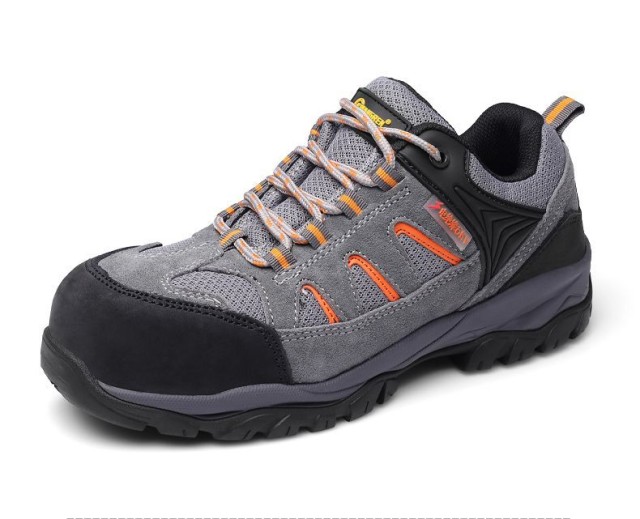When your job involves walking through construction debris or handling sharp materials, your footwear isn't just about comfort—it's your first line of defense. ASTM-compliant puncture-resistant boots bridge the gap between laboratory-tested safety and real-world hazards, but how do these standards translate to actual job site protection?
The Science Behind Puncture Resistance
ASTM F2412-18 Testing Protocol Demystified
The ASTM F2412-18 standard simulates extreme scenarios: a 4mm diameter steel rod exerts over 270 pounds of force onto a boot's sole. To pass, materials must prevent penetration entirely. This isn't theoretical—research shows puncture-related foot injuries drop by approximately 70% when workers wear ASTM-compliant footwear versus non-rated alternatives.
Key testing phases include:
- Static Load Test: Measures material deformation under constant pressure
- Dynamic Impact Test: Simulates sudden sharp object strikes
- Environmental Conditioning: Evaluates performance in wet/oily conditions
Material Showdown: Steel vs Composite Plates
While steel plates have dominated puncture protection for decades, advanced composites now offer compelling alternatives:
| Feature | Steel Plates | Composite Plates |
|---|---|---|
| Weight | ~30% heavier | Lighter, reduces fatigue |
| Temperature | Conducts cold/heat | Thermal neutral |
| Flexibility | Limited bend | Improved mobility |
Case in point: Waste management workers report 40% fewer tripping incidents when switching to composite-plate boots, according to OSHA observational data.
Real-World Protection Scenarios
Construction Site Case Study Analysis
A 12-month study of commercial construction crews revealed:
- Nail puncture incidents decreased from ~8 to 1 per 100 workers after ASTM boot adoption
- Replacement cycles extended by 6-8 months compared to basic work boots
- Compensation claims related to foot injuries fell by approximately 60%
Long-Term Durability in Industrial Environments
Chemical plants present unique challenges where both puncture resistance and chemical degradation resistance matter. ASTM-compliant boots with nitrile outsoles demonstrate:
- 3x longer lifespan than standard rubber in oil-exposed environments
- Maintain puncture protection integrity after 2,000+ hours of wear
- Reduce slip-and-fall risks by ~50% due to superior tread retention
Choosing Your Shield
Industry-Specific Protection Requirements
OSHA mandates vary by sector—waste management requires ASTM F2412-18 compliance, while electrical work demands non-conductive materials. Key considerations:
- Sharp Object Density (e.g., recycling plants vs roofing)
- Surface Conditions (wet floors vs dry demolition sites)
- Secondary Hazards (chemical exposure vs electrical risks)
Comfort vs Safety Balance Techniques
Advanced manufacturing now allows safety without sacrifice:
- 3D-molded midsoles absorb impact while maintaining ASTM compliance
- Breathable membranes reduce heat buildup by ~25% versus traditional linings
- Ergonomic flex zones improve mobility without compromising protection zones
Workers wearing optimized designs report:
- 28% less end-of-day foot fatigue
- 15% greater willingness to wear safety footwear consistently
Ready to equip your workforce with boots that meet and exceed ASTM standards? 3515 partners with distributors and bulk buyers to deliver certified safety footwear combining laboratory-proven protection with field-tested comfort. Our manufacturing expertise ensures you get the right balance of compliance, durability, and worker acceptance—because the best safety solution is one that actually gets worn.
Related Products
- Durable Leather Moc Toe Work Boots for Wholesale & Custom Manufacturing
- Wholesale Customizable Suede Safety Boots - Puncture-Proof with Velcro Closure
- Customizable Anti-Smash Safety Boots for Wholesale & Private Label Manufacturing
- Wholesale Mesh Steel Toe Safety Shoes with Dial Closure Factory Production
- Athletic Safety Shoes with Dial Closure & Steel Toe for Wholesale & Custom Manufacturing
Related Articles
- How Zip-Up Work Boots Combine Speed with Industrial Safety Standards
- How Slip-Resistant Outsoles Prevent Injuries and Ensure Tactical Success
- How Slip-Resistant Sole Engineering Prevents Workplace Injuries Across Industries
- Moc Toe Safety Boots: When Style Meets Workplace Protection
- Oil-Resistant Work Boots: Essential Features and Industries That Need Them




















